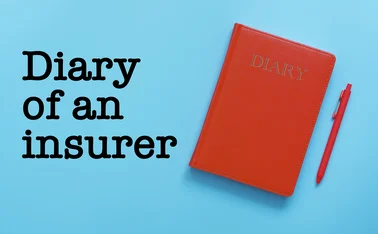
View From The Top: Tackling under-insurance

We all realise that under-insurance of commercial property and related business interruption cover is a serious, long-running issue in our industry.
Official numbers of the scale of the problem are hard to come by, but a survey by the Chartered Institute of Loss Adjusters estimated that between a third and half of all commercial property policies do not cover the full reinstatement costs following a loss. The survey suggests that the level of inadequate cover can be as high as 50% — numbers that are of no surprise to many of us.
Building regulations and public authority requirements have become stricter, increasing reinstatement costs and leading to longer rebuild times. Consequently many firms underestimate their indemnity periods and BI exposures. Due to the methods in collating information, book values may sometimes be declared instead of full reinstatement costs and errors in properly calculating the insurable gross margin can be made if, for example, wage costs are overlooked as a continuing expense.
Some argue the current economic climate could lead to over-insurance, as falling property and commodity prices lower the rebuilding and BI expenses. However, with no official numbers or obvious, easy solutions, the problem continues to be pushed aside. The application of average, when under-declared values do not cover the full reinstatement costs, leads to friction and disputes. It is clear a new approach is needed to ensure insurers receive adequate compensation for the true risks they take and companies know they are properly covered.
Calls to use third-party assessors to calculate reinstatement values are met by concerns about the cost of these surveys plus any subsequent mid-term increase in insurance premiums.
In order to tackle the problem head-on, insurers should take the first step, for example by negotiating 'preferred' rates from third-party assessors on behalf of clients or looking at a phased approach to make any mid-term increases 'more manageable'.
Avoiding costly surprises and disputes should be in the interest of insurers and insureds. Despite this, some companies might still ignore the dangers of under-insurance, citing higher premiums or just hoping for the best. However, by finding simple solutions that soften any potential impact of re-evaluation, insurers can demonstrate they are serious about tackling the problem.
Peter Smithdale, property underwriting manager, XL Insurance
Only users who have a paid subscription or are part of a corporate subscription are able to print or copy content.
To access these options, along with all other subscription benefits, please contact info@postonline.co.uk or view our subscription options here: http://subscriptions.postonline.co.uk/subscribe
You are currently unable to print this content. Please contact info@postonline.co.uk to find out more.
You are currently unable to copy this content. Please contact info@postonline.co.uk to find out more.
Copyright Infopro Digital Limited. All rights reserved.
You may share this content using our article tools. Printing this content is for the sole use of the Authorised User (named subscriber), as outlined in our terms and conditions - https://www.infopro-insight.com/terms-conditions/insight-subscriptions/
If you would like to purchase additional rights please email info@postonline.co.uk
Copyright Infopro Digital Limited. All rights reserved.
You may share this content using our article tools. Copying this content is for the sole use of the Authorised User (named subscriber), as outlined in our terms and conditions - https://www.infopro-insight.com/terms-conditions/insight-subscriptions/
If you would like to purchase additional rights please email info@postonline.co.uk
Most read
- LV’s Mike Crane leaves insurer
- ABI sets out principles to address motor premium finance
- Copart confirms delays to Luton Airport salvage operation







